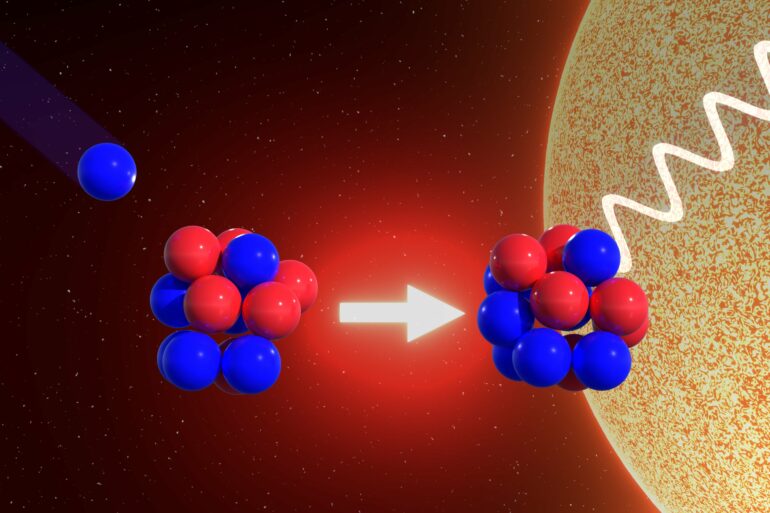Nuclear astrophysics studies the evolution of the elements in the universe since its creation. The astrophysical models rely on parameters that scientists deduce from laboratory measurements. Nuclear reactions play a crucial role inside stars. A team from the Helmholtz-Zentrum Dresden-Rossendorf (HZDR), together with researchers from Italy, Hungary and Scotland, has now reinvestigated one of the central reactions at the Dresden Felsenkeller accelerator with a surprising result, as reported in the journal Physical Review C.
“We studied a long-known nuclear reaction, which is important for the creation of the elements in massive stars. It is also one of the earliest reactions to be studied at an ion accelerator laboratory: the collision of a carbon-12 nucleus with a hydrogen nucleus, which creates the isotope nitrogen-13 and gamma-radiation. The reaction is the first step in the so-called CNO cycle. We were interested in the reaction cross section, which tells us about the probability for this reaction to occur,” says Prof. Daniel Bemmerer of the HZDR-Institute of Radiation Physics.
This parameter has been determined by a team of Italian, Hungarian, Scottish and German scientists at the Felsenkeller with unparalleled precision. The surprising result: The previously accepted value has to be corrected down by about 25%. The result suggests that the burn-in phase of the CNO cycle took longer, and that the emission of 13N neutrinos occurs closer to the center of the sun than previously assumed. The new data also allows more precise theoretical predictions for the ratio of carbon isotopes 12C/13C in stars, which in turn help to benchmark and improve models for processes in the interior of stars.
A miniature sun in the laboratory
Stars obtain their energy from the fusion of hydrogen to helium. Depending on the mass of the stellar object, different ways for this process to occur are known. In low-mass stars, such as our sun, the so-called proton-proton chain is the dominant process. In more massive stars, much higher temperatures are reached inside, due to the gravitational pressure. This allows also for the reaction between hydrogen and carbon nuclei.
Although less than 2% of the interstellar matter that forms stars is made of carbon, this concentration is sufficient to start and sustain the CNO cycle. The carbon acts as a catalyst that accelerates the reaction but does not get consumed in the process. The net reaction is the same as for the proton-proton chain: the fusion of hydrogen to helium. However, in massive stars this reaction proceeds much faster through the CNO cycle.
“We use tantalum disks with carbon evaporated on the surface as targets. They are hit by protons from our 5 MV Pelletron accelerator, which can cover a fairly large energy range. The gamma-rays which are created in the reaction can be detected with 20 high-purity germanium detectors,” Bemmerer explains.
The Felsenkeller Underground Laboratory in the Plauenscher Grund near Dresden is jointly operated by HZDR and TU Dresden. Located in a tunnel formerly used to store ice for the Dresden Felsenkeller brewery, it is well-suited for such measurements, as a 45 meter thick layer of rock protects the detectors from cosmic radiation. Otherwise, this radiation could interfere with the sensitive measurements. The current work is also a good example for European collaboration in the astrophysics community: A Ph.D. student from the University of Padua conducted research at the Felsenkeller for six months during the experiment.
More information:
J. Skowronski et al, Improved S factor of the C12(p,γ)N13 reaction at E=320–620 keV and the 422 keV resonance, Physical Review C (2023). DOI: 10.1103/PhysRevC.107.L062801
Provided by
Helmholtz Association of German Research Centres
Citation:
A look inside the sun’s fire: New measurements point at slower burn-in phase of hydrogen burning (2023, October 11)



